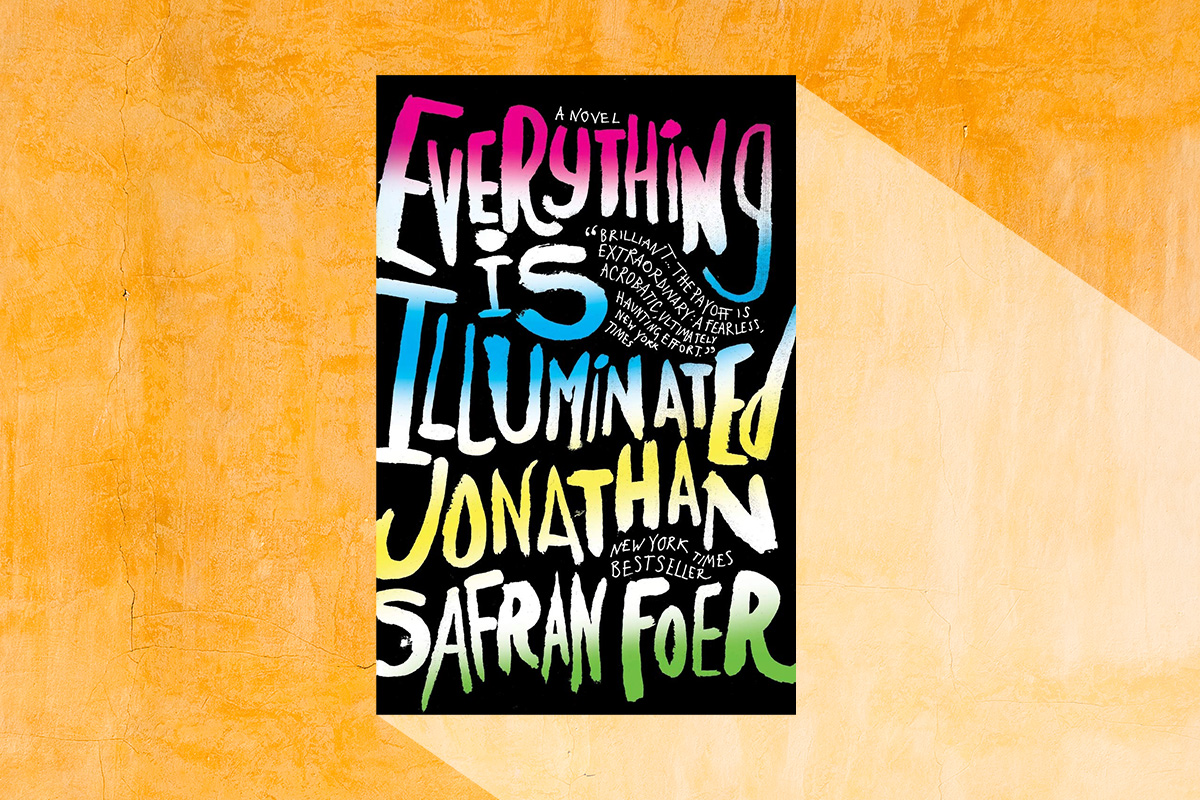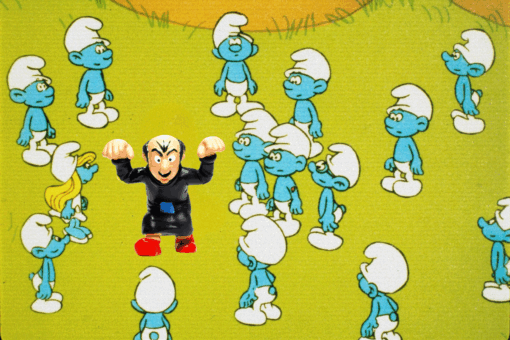Picture this: You stroll into a Barnes & Noble, in all your teenage independence, wadded-up cash in hand, overcome with the smell of paper and ink and chocolate chip cookies. It’s 2011, and you are reinventing yourself. You make a beeline for the adult fiction section and pick up Jonathan Safran Foer’s 2002 novel “Everything Is Illuminated.” You are cool now.
Or was that just me?
As a 14-year-old, reading “Everything Is Illuminated” left an enduring impression. After coming home from Barnes & Noble, my new literary fiction in hand, I laid in my backyard and let the California sun wash over me as I read about a man named Jonathan Safran Foer (the protagonist, not the author) trying to navigate his generational trauma. Narrated by Alex, a Ukrainian kid whose schtick is overusing a thesaurus to the point of creating a new dialect, “Everything Is Illuminated” tells the tale of the fictional Foer trying to understand his family’s history during the Holocaust, interspersed with scenes from a magical realist version of an old shtetl where a baby is born from the depths of a river. This complicated, beautiful, and very Jewish book provided me with some literary solace as a teenager. Now, as an adult, it provides a framework as I begin my journey of studying Judaism.
You might know the Jewish author from his 2005 book “Extremely Loud and Incredibly Close,” a novel about a precocious 9-year-old reeling after the death of his father on 9/11. Yet what you may not know is that Jonathan Safran Foer got his start as an author thanks to a trip to Ukraine just after his sophomore year at Princeton. He initially went to Ukraine in search of the woman who rescued his grandfather during the Holocaust, but the trip wasn’t what he expected. “I found absolutely nothing,” said Foer in a 2002 interview. “I didn’t find the woman, I wasn’t even close to finding the woman, and I didn’t even find the kind of absence that I was anticipating. It wasn’t evocative. It wasn’t a moving experience. It was just nothing.” So, he wrote a poetic, fictionalized version of what he wanted to find: “Everything Is Illuminated” was published when he was 25.
In the book, a fictionalized Jonathan Safran Foer travels to Ukraine in search of the woman who saved his grandfather from the Nazis. While traveling, he pens a novel about life in the all-Jewish community known as a shtetl where his ancestors would have lived. The shtetl, Trachimbrod, is a fictionalized version of the real shtetl Trochenbrod, where Foer’s father and grandfather are from.
The novel, particularly its historic sections, is so packed full of Jewish references I am scarcely able to list them all, and there are probably some I’ve still failed to decipher. In the first flashback chapter alone, Foer paints a portrait of the Ukrainian shtetl in 1791 with characters like the “gefiltefishmonger,” the “Well-Regarded Rabbi,” a character who has “lost a wife in the ‘Pogrom of Torn Garments,’” a man employed as a candle dipper, and a lazy man who reclines on Passover not because it is unlike all other nights but because he, in fact, always reclines while eating. Brod, the girl in the shtetl who will eventually be known as Jonathan’s sixth-great-grandmother, “discovers” 613 sadnesses, an allusion to the 613 commandments in the Torah. In the present-day sections, one of the characters has a dog named Sammy Davis, Junior, Junior — Sammy Davis Jr. being a notable convert to Judaism.
In strange contrast to the grief and trauma, the book is also very sexual — perhaps expected from an up-and-coming male writer in the early 2000s in New York, but unexpected when applied to the setting of a shtetl in 1791. You learn how everyone in the shtetl is fucking, or thinking about it when they’re not pondering their sadness or the existence of a kind and loving God. It’s a bit like Say Anything’s “Alive With The Glory of Love,” except that instead of a four-minute song, it’s a 276-page book.
As a kid, I was raised in an agnostic household, and I wasn’t truly introduced to Judaism until college. It was only when I became interested in converting that I realized: even through the lens of magical realism, I had internalized a great amount of Jewish history and culture from Foer’s novel.
I was introduced to Judaism through friends who were in our college’s Hillel club. The more I learned, I began to recall scenes from Foer’s novel the way I casually think about any book that sticks with me, and eventually, I realized that Judaism was a huge component of this plot that I’d essentially missed out on the first time. Until reading Foer’s work, the only Jewish stories I’d encountered had been Holocaust-centric, and sometimes not even focused on a Jewish character. While the Holocaust is an important part of its plot, “Everything is Illuminated” also provides the reader with a window into the lives of Jews before the 20th century and insight into how contemporary American Jews like Foer reckon with their ancestors and their past.
The melancholy that Foer felt upon leaving Ukraine without any answers translates directly into the novel. The characters are sad; they experience immense loss, trauma, and grief. But because the book switches effortlessly from past to present day, readers come away from it with a sense of resilience.
In my adolescence, when I reached for the book, I was looking for some literature that would speak to the strange sadness I was feeling, the need to perform maturity so as not to be perceived as a child, testing the waters of the greater literary world. I didn’t know then that I was now interacting with Foer’s intricately woven documentation of his own Jewish ancestry. Foer’s debut novel is flawed — it can be criticized for leaning too heavily on sexuality, featuring some questionable language that editors somehow okayed in the early aughts, or focusing so much on the mysticism that some of the passages in the shtetl feel dense or overly precious. Yet, it features the kind of ancestral reflection that one can only glean from setting foot in one’s homeland and sifting through history.
“Everything is Illuminated” is a truly strange and beautiful intertwining story about discovery, generational trauma, love, sadness, and life that continues to linger with me.
Late Take is a series on Alma where we revisit Jewish pop culture of the past for no reason, other than the fact that we can’t stop thinking about it?? If you have a pitch for this column, please e-mail submissions@heyalma.com with “Late Take” in the subject line.




